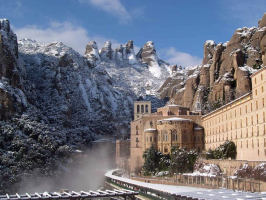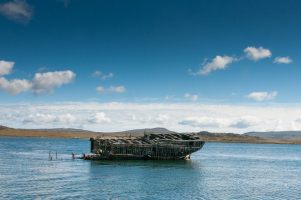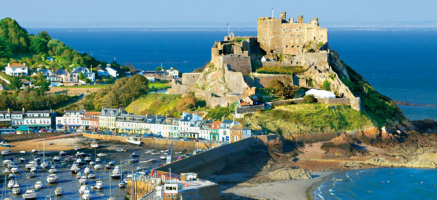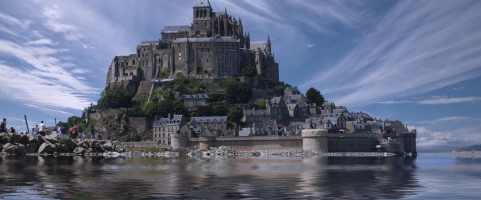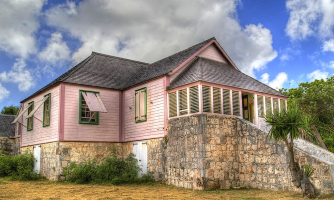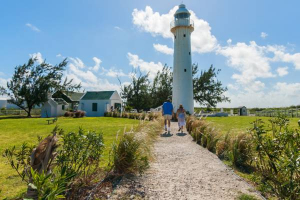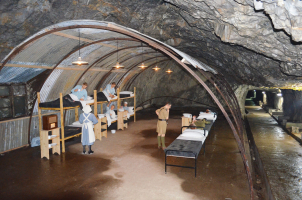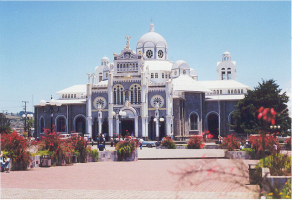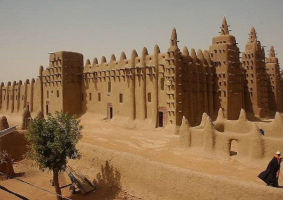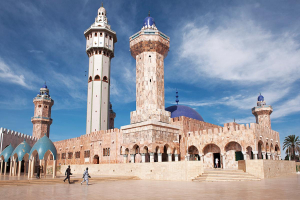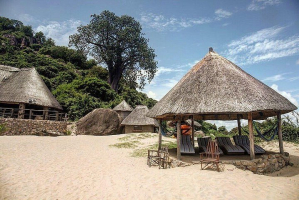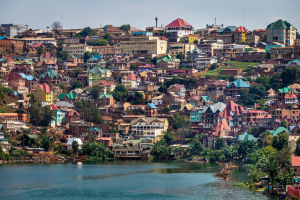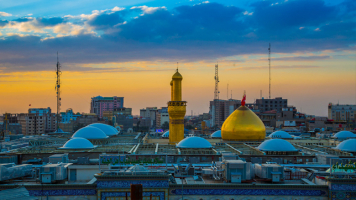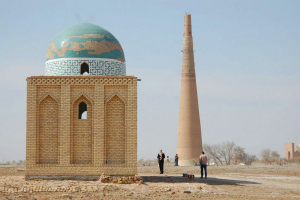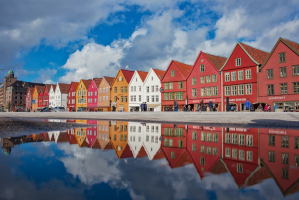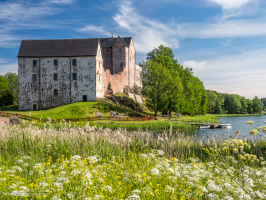Top 9 Most Beautiful Historical Sites in Isle of Man (UK)
Famous for its bobcats, historic language, striking flag, motorcycling capital of the world, and reputation for its own work. The Isle of Man is also home to ... read more...some of the most beautiful historical sites. With an ancient beauty, up to hundreds of years old, the historical sites in the Isle of Man still retain that beauty despite the wear and tear of time. Let's explore with Toplist and dig deeper into the historical sites on the Isle of Man.
-
St Michael's Island, often known as Fort Island, is a small island on the Isle of Man's Malew parish that is recognized for its intriguing remains. A thin causeway connects it to the Langness Peninsula, near Derbyhaven, which is 5.14 hectares (12.70 acres) and is about 400 meters (440 yards) long from west to east. The island is made up entirely of shale, and the soil is quite acidic. It does, however, have significant maritime flora biomes.
There is evidence of human activity on the island dating back to the Paleolithic period, as well as two old buildings. Both are in a state of disrepair and are closed to the public, though there are various footpaths that tourists can use to explore the area.
On the south side of the island, St Michael's Chapel, a 12th-century chapel, may be found. On the site of a historic Celtic keeill, this Celtic-Nordic chapel was erected. In 1250 and 1275, two important conflicts for control of the Isle of Man took place on the island, with England, Scotland, and the Manx vying for dominance. The Manx won the initial war, but Scotland took possession 25 years later.
The island's eastern edge is home to Fort Derby, a 17th-century stronghold. It was built in 1645 by James Stanley, 7th Earl of Derby and Lord of Mann, to secure the busy port of Derbyhaven at the time of the English Civil War. St Michael's Isle is one of the most beautiful historical sites in Isle of Man.Location: island Malew parish, the Isle of Man.
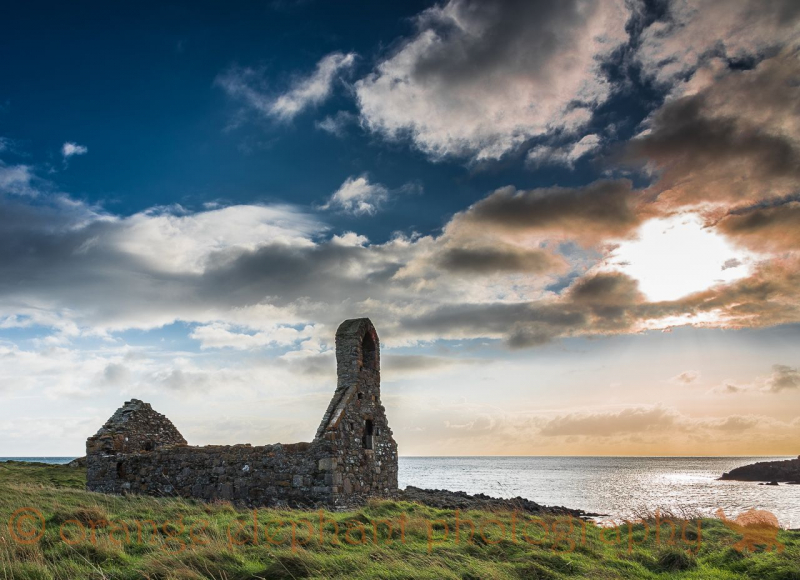
Photo: https://i.pinimg.com/ 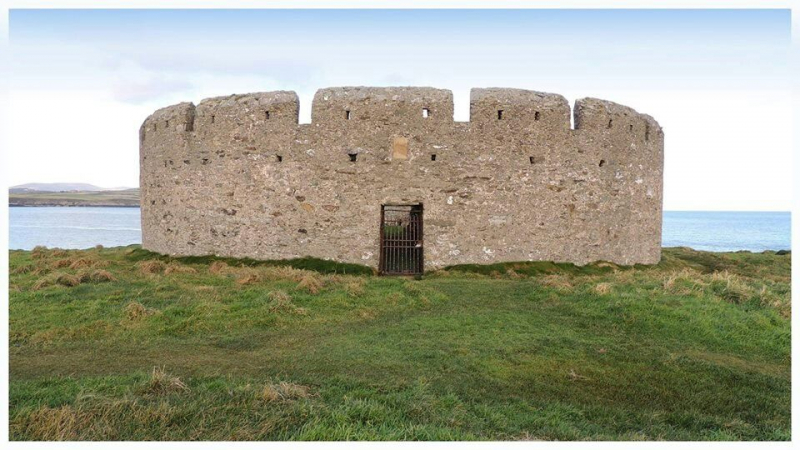
Photo: https://i.pinimg.com/ -
St Trinian's Church is the roofless ruin of a small chapel at the foot of Mount Greeba, adjacent to the main A1 Douglas - Peel road in the parish of Marown, Isle of Man. Referred to in Manx as "Keeil Brisht" (broken church), the church is the source of an ancient Manx folk tale involving Buggane, a giant mythical elf that lives on Mount Greeba, and humans swore that the church should never be completed.
According to legend, the church was built to fulfill a shipwrecked person's oath. It was originally named after Ninian, a 4th-century Scottish saint, but the name was eventually changed to Trinian. The ruins of a 14th-century church on an earlier site, as demonstrated by the 7th-century cross on the grave in front of the ruins of the altar, are known as St Trinian's. The cross could indicate the location of the founder's shrine, which was supposed to be the original Manx Keeil.
St Trinian's Church became a favorite place for Sunday School picnics in the late 19th and early 20th centuries. On September 4, 1911, the holy liturgy was held at St Trinian's for the first time in hundreds of years. According to recent reports, a great number of individuals gathered, far more than the chapel could allow. The Bishop of Sodor and Man, as well as the Central Governor of the Isle of Man, Lord Raglan, who presented the lesson, and Pastor Clarke, who read the prayer, all participated in the celebration. Lady Raglan was also present, and the Crosby Brass band performed. As a result, the church was used for worship on other occasions. St Trinian's was used as one of the filming sites for The Manxman, a film based on Hall Caine's novel, in September 1916. Caine was a resident of Greeba Castle, which was close to St Trinian's. St Trinian's Church deserves to be on the list of most beautiful historical sites in Isle of Man.Location: Peel Rd, Crosby
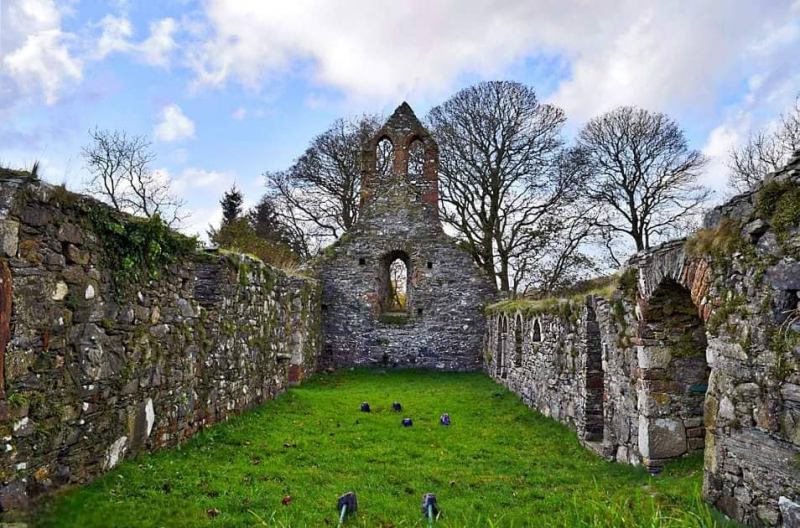
Photo: http://manxscenes.com/ 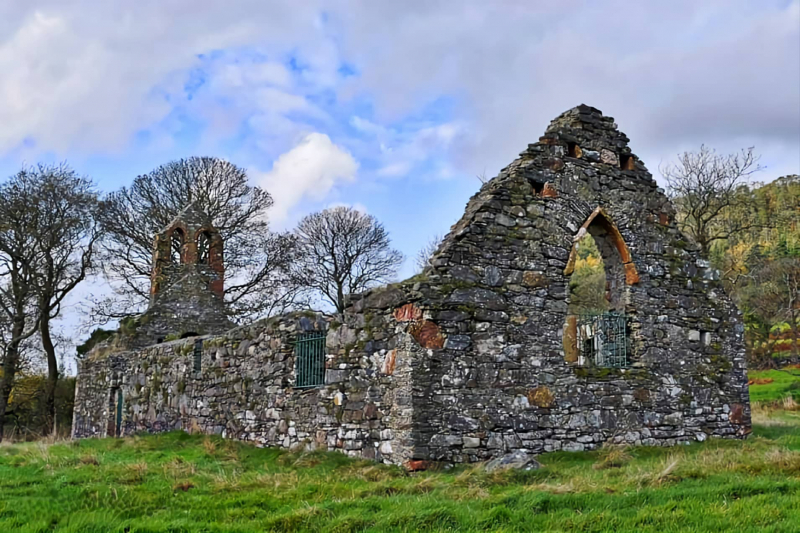
Photo: http://manxscenes.com/ -
Lonan old church (Kirk Lonan or Keeil-ny-Traie) lies 1 mile south of Ballakilley on the A2 east coast road, 1 mile south of Baldrine, and 1 mile east of Onchan 4 miles to the south is Douglas. The church is now mostly wrecked, but the historic churchyard and nine Celtic-style crosses and slabs make it a fascinating sight.
The small church, dedicated to St Adamnan or Eunan, dates from the 12th-14th centuries, but there was an older 7th-century structure on the site that stood on a pre-Christian, pagan site; its eastern wall is presumably the earliest section of the church. St Adamnan, an Irish monk, was abbot of Iona in western Scotland from 679 to 704, albeit it was St Patrick's nephew St Lonan who was the first to reside here in the late fifth century. After St Maughold, he was the third bishop of Mann. Just to the south of the church is St Lonan's holy well (Chibbyr Onan). The church was saved from total demolition in 1895 because of the Rev John Quine, a local antiquarian.
The most impressive of the nine crosses (no 73) is still in its original location on the kirkyard's south side. It has a massive equal-limbed Celtic wheel-head cross that is almost totally covered with interlacing, knot-work, and plait-work motifs and stands 8 feet tall. This was created in the 5th century AD. All of the other cross-slabs are located in the roofed section on the east side of the church, against the north wall. The remaining eight cross-slabs and fragments, numbered 23, 27, 71, 75, 76, 77, 160, and 177, are badly worn, with only faint carvings visible; one has been repaired and reveals half of a miniature wheel-cross and two remnants of 'The Glenroy Cross.' These are newer, dating from the 8th to 10th century AD, and display Celtic and Norse craftsmanship. The casts of these cross-slabs can be seen at the Manx Museum in Douglas.
Location: Baldrine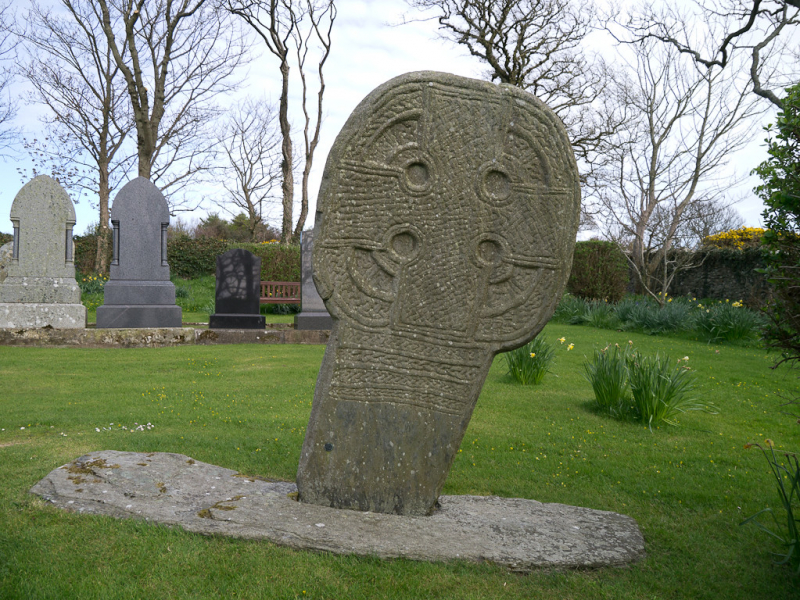
Photo: https://live.staticflickr.com/ 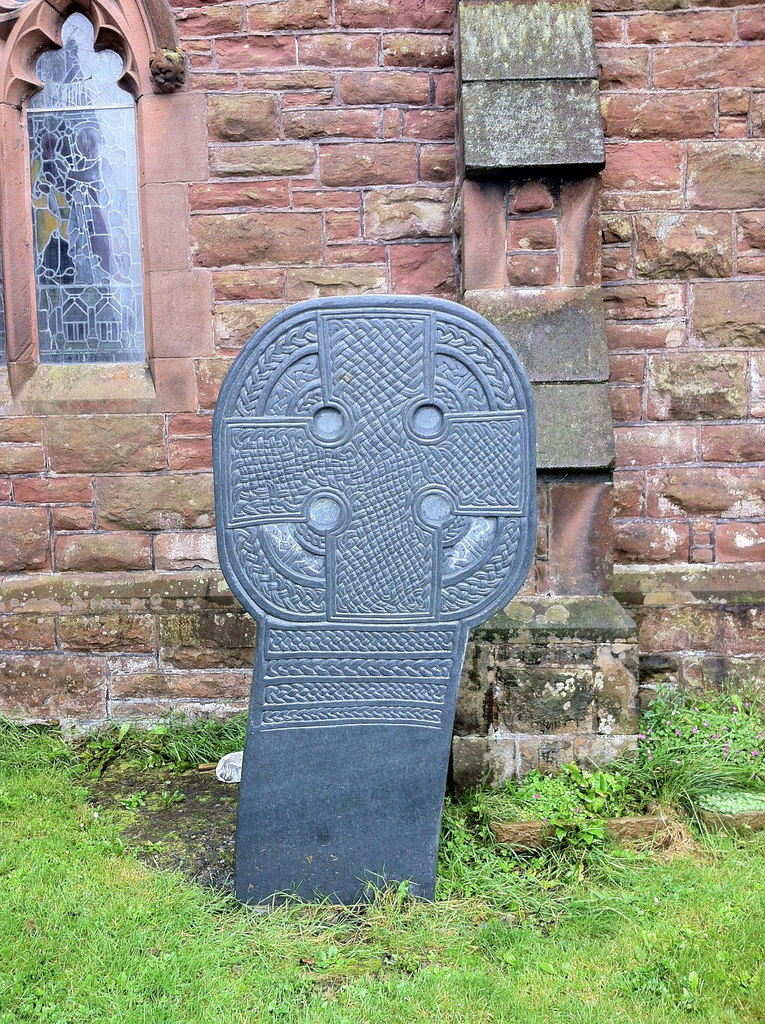
Photo: https://s2.geograph.org.uk/ -
The Laxey Wheel (also known as Lady Isabella) is located on the Isle of Man's mountainside above the settlement of Laxey. It is the world's largest functioning water wheel. The wheel measures 72 feet 6 inches (22.1 meters) in diameter, 6 feet (1.8 meters) wide, and turns at around three rotations every minute, according to its designer, Robert Casement.
It was established in 1854 to pump water from the Great Laxey Mines industrial complex's Glen Mooar section. It was named "Lady Isabella" after Lieutenant Colonel Governor Charles Hope's wife, who was the island's governor at the time. Manx National Heritage is actively maintaining the wheel as part of the Great Laxey Wheel & Mines Trail. The reverse side of the Isle of Man Government's £20 note is featured on the wheel today.
For almost 150 years, it has been one of the most popular tourist attractions on the Isle of Man. Before attempting to climb to the top, you'll have the opportunity to watch the wheel spin and be rewarded with panoramic views of the Glen Mooar Valley. Formerly back on solid ground, travel across the valley to the Great Laxey Mines, where you can hear about the lives of the miners, hike into the mines, and ride on the Great Railway Laxey Mines, which was once used to move lead and zinc ores from deep beneath the mine. With inherent natural beauty and historical beauty preserved to this day, The Great Laxey Wheel deserves to be on the list of the most beautiful historical sites in Isle of Man.
Location: Laxey, Isle of Man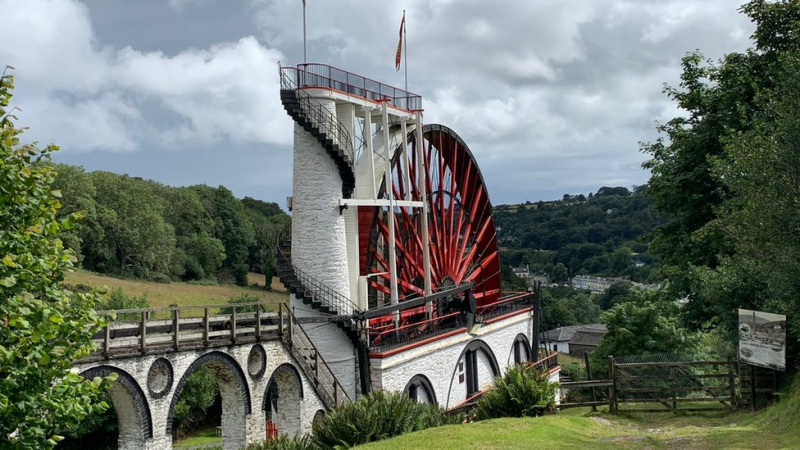
Photo: https://c.files.bbci.co.uk/ 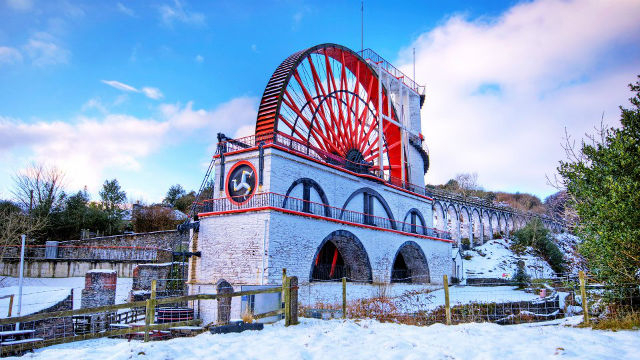
Photo: https://www.visitiom.co.uk/ -
The Tower of Refuge is a cast-iron structure erected to give suitable refuge for marines stranded on rocks on St Mary's Island (also known as Conister Rock) in Douglas Bay, Isle of Man. Sir William Hillary, was instrumental in a number of rescues of sailors trapped on rocks, culminating in the heroic rescue of the crew of the steamship RMS. St George of the Saint George Steam Company, which was founded on the rock in the early hours of November 20, 1830, was responsible for the construction of the tower. Sir William personally provided a large chunk of the cost and was able to get a significant amount of public funding for the project.
The first stone was placed by Sir William on April 23, 1832, in the presence of Archdeacon Benjamin Philpot, Member of the House of Keys, and many other notable Douglas inhabitants. It was designed by renowned local architect John Welch of the firm Hansom & Welch. The construction is designed in the style of a 13th-century castle, with balustrades and hanging corks similar to those found at Rushen Castle and Peel Castle. The tower originally had a bell to call for rescue, as well as provisions for any shipwrecked passengers, such as bread and soft beverages. Another proposal was to build a small boat with living quarters built into the framework, but this was abandoned.
King William College and the Smelt Memorial are two more notable structures constructed by Welch on the Isle of Man. On May 9, 1932, commemorations of the Asylum Tower's construction were conducted. Sir Godfrey Baring, then President of the Royal National Lifeboat Institute, paid a visit to the Isle of Man as a guest of Lieutenant Colonel Governor of the Isle of Man, Sir Claude Hill. The Douglas Missile Brigade and Lifeboats were also part of the celebration, which concluded in an evening at the Gaiety Theatre.
Location: St Mary's Isle, Douglas Bay, Isle of Man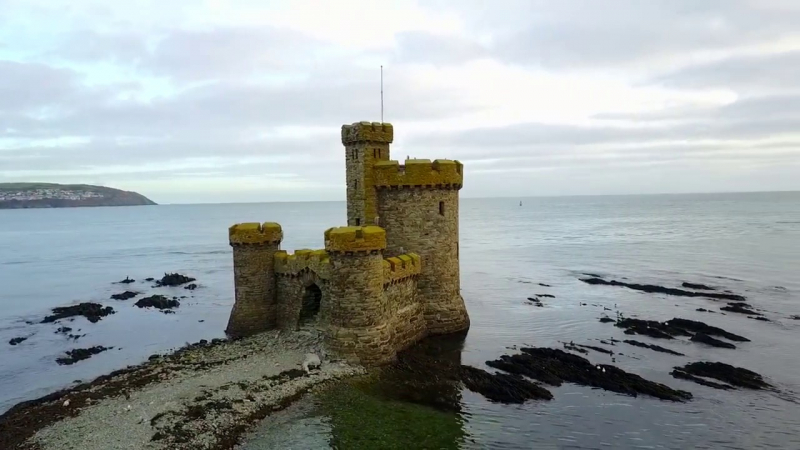
Photo: https://i.ytimg.com/ 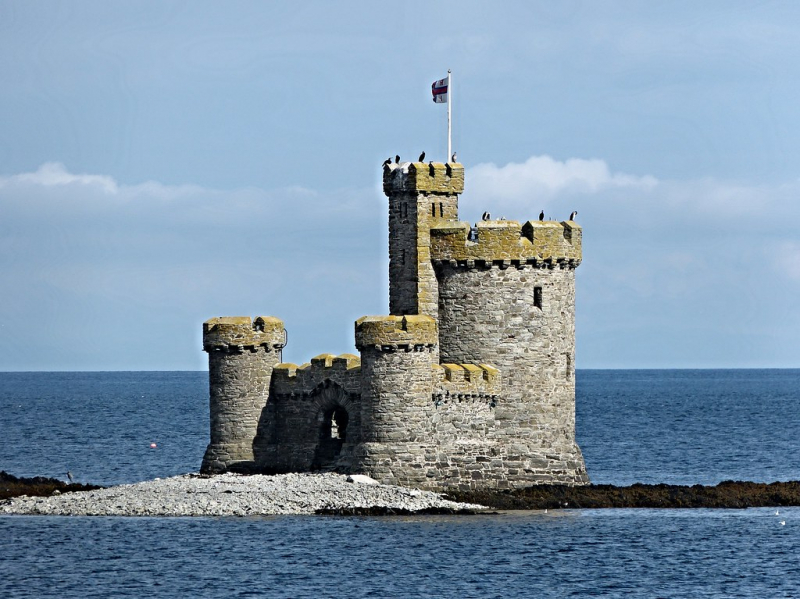
Photo: https://live.staticflickr.com/ -
The Old House of Keys in Castletown was formerly the epicenter of Island politics in the nineteenth century. The structure is part of the lengthy and often tumultuous history of Manx politics, which dates back to the 9th and 10th centuries when the Isle of Man was controlled by Viking rulers.
The elegant Ancient House of Keys was restored to its original appearance in 1866, marking a watershed moment in Manx history when the self-elected old House of Keys became an elected body by enacting the House of Keys Election Bill. During your visit, you'll learn about how democracy has developed on the Island, often years ahead of Britain, and the impact political decisions have had and continue to have on the Manx people. You'll meet the official secretary of this historic institution before taking a seat in the beautifully refurbished debate room, where you'll hear lively debate about how the Island's laws are made.
Prior to 1821, the House of Keys had no official home, but first met at Castle Rushen, and later at the Bishop of Sodor and Man library in Castletown. Plans for a new meeting place for the Keys were drawn up in 1813 after criticism from the Royal Commission, but they were revised and accepted in 1819 due to financial concerns. Thomas Brine designed the structure, which was finished in 1821. It was the residence of the House of Keys until 1874 when the Keys resumed other major island functions and moved to Douglas. After the move, Old House became a branch of Dumbell Bank, and later Parr Bank. Manx National Heritage bought the home in 2000 and began restoring it to its original state in 1866. The building opened to the public as a museum in November 2001. With ancient beauty and unique historical works, The Old House of Keys deserves to be on the list of the most beautiful historical sites in Isle of Man.
Location: Castletown
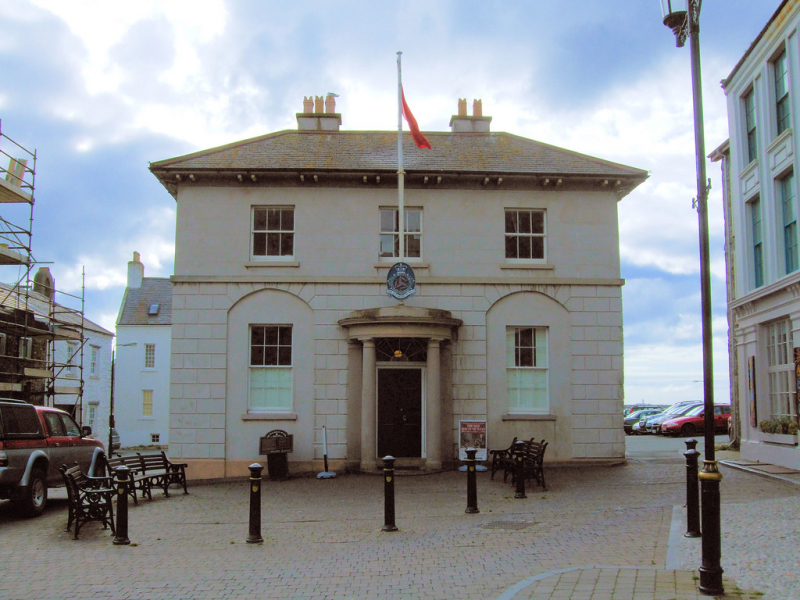
Photo: https://c1.staticflickr.com/ 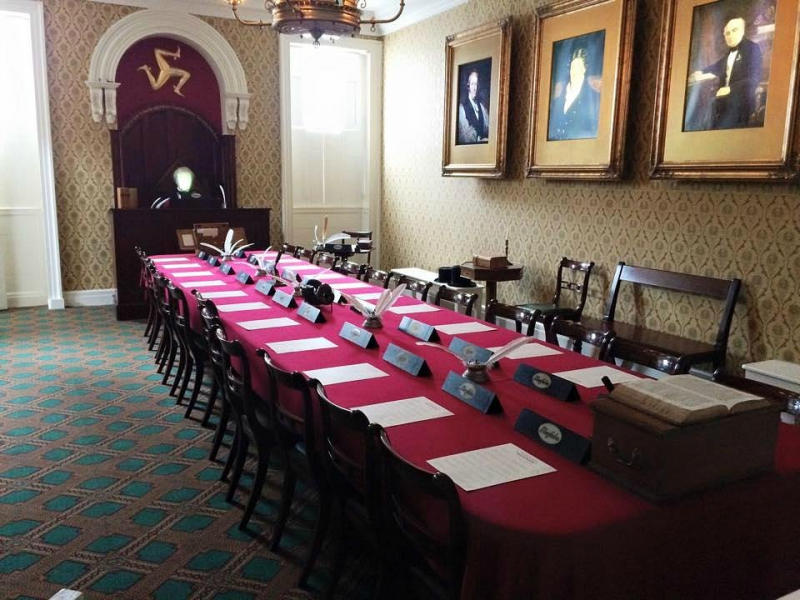
Photo: https://www.tripadvisor.com/ -
Until 1876, Braddan's parish church was Old Kirk Braddan. The site, which is dedicated to Saint Brendan or Braddan, has a long ecclesiastical history. Christian worship can be traced back to fourteen centuries. Around 400 AD, stones from the first Celtic Keeill (Chapel) were discovered.
Kirk Braddan Church, which was completed in 1876, is located close to the older Kirk Braddan Church. Both churches hold services, with the old church holding them less regularly and the modern church holding them more frequently. The primary Celtic and Scandinavian crosses from AD 800 to 1265 are presently housed in the historic Kirk Braddan Church, which was built in the 1700s. Around 600 AD, the first cross was made. In the parish, there are a total of nine runic crosses. Four of them are thought to be Scandinavian and contain similar inscriptions. The renowned ring chain pattern can be found on several crosses. This is the work of sculptor Gaut, son of Bjorn, who immigrated to the Isle of Man from Coll Island in the Hebrides. He was a master sculptor of his day (between 950 - 1040 AD). "Gaut made this and all in Mann," according to a crucifix carrying his designs. This demonstrates the breadth of his carving, which can be found on a number of early Celtic and later Scandinavian crosses.
Other relics seen in the old church are the sculptural crucifix nailed on the east gable, two-tower window ties (dated 1714) bearing Normanesque moldings, and interior fittings. the original of the church. Today Kirk Braddan Church is considered one of the most beautiful historical sites in Isle of Man.
Location: Douglas, Middle.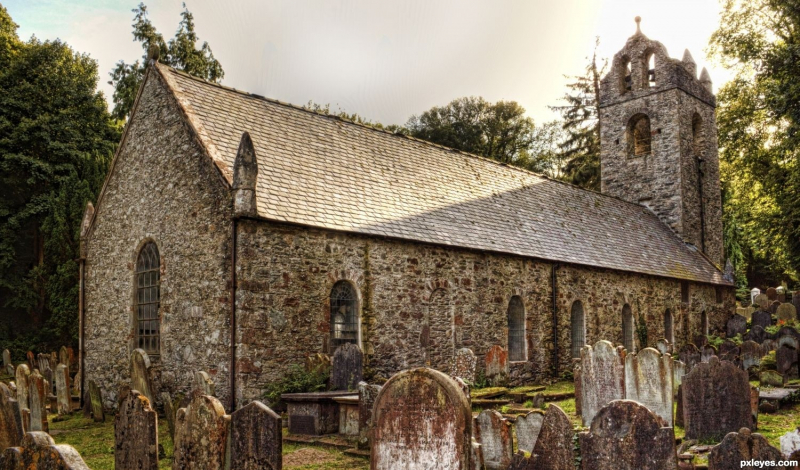
Photo: http://www.pxleyes.com/ 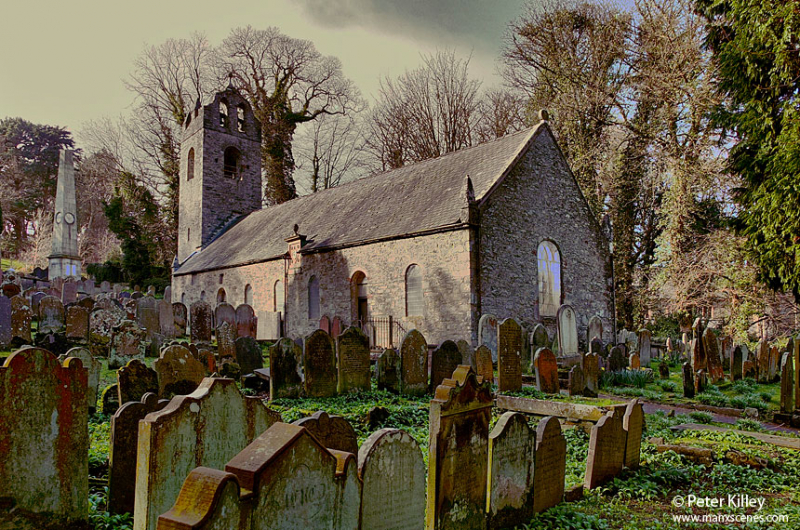
Photo: http://manxscenes.com/ -
Castletown Train Station is an intermediate station on the Isle of Man Railway on the Isle of Man and is one of the few remaining stations from the island's once-vast network. Because it is nearest to various local attractions, the station is the busiest of the railway's intermediate stations. Trains frequently pass through here during peak season, making it one of the railway's busier stops. The station is located close to local playgrounds and within walking distance of the main town.
On the northeastern outskirts of Castletown, it was an original station on the Isle of Man Railway. When the railway was first completed, the town was the island's capital for ten years, hence a substantial station was built. The town's importance as the island's capital and seat of parliament until 1869, when Douglas was named the capital, may explain the size of the station site and associated structures.
Despite the town's importance, the train station is located to the north-northeast of the town center. The station is still one of the busiest on the line, supplying a steady stream of freight and passengers over the years. The town has grown so much since the station opened that it is now surrounded on one side by residential and industrial sectors, including a petrol station and car dealership. In 1903, the station was enlarged to its current configuration. The structure comprises the terminal owner's office, restrooms, and shared and female lounges, all of which have been greatly upgraded.
When the Castletown Railway station was utilized as a terminus for the railway's famed annual Santa Trains for the first time in December 2010, it was dubbed Tinseltown for the first time. The station hosted official celebrations associated with the 2011 Commonwealth Youth Games with a "cultural day" before the event's closing ceremony on Monday, September 12, 2011. The event took place in the city. The Southern 100 motor race organizers hosted a closing ceremony and prizes for the 2015 race outside the station due to reconstruction work taking place in the town's historic market square at the time of the event. To this day, Castletown Railway Station is recognized on the list of the most beautiful historical sites in Isle of Man.
Location: Station Road Off Victoria Road, Castletown IM9 2EF.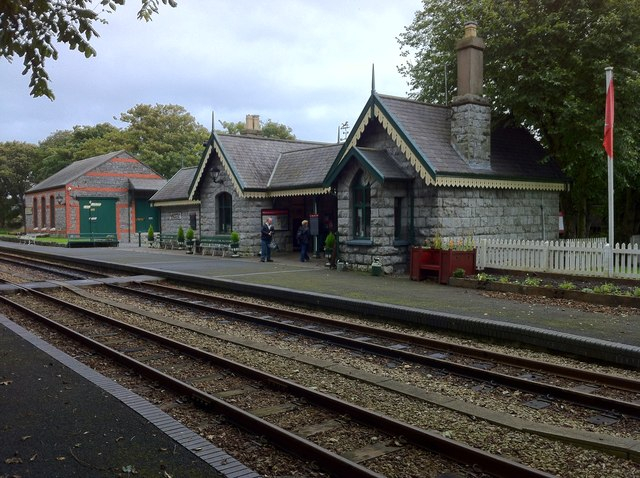
Photo: http://s0.geograph.org.uk/ 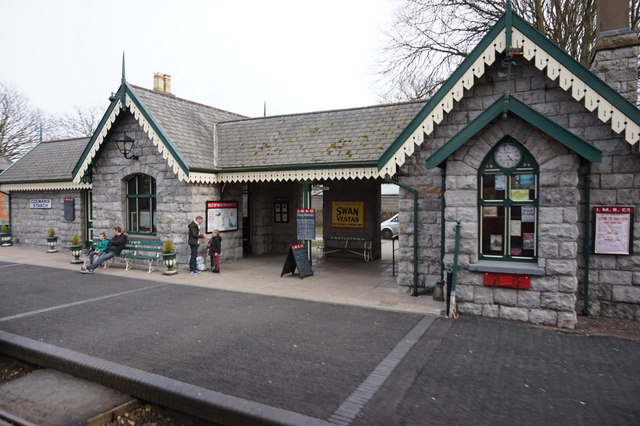
Photo: https://s0.geograph.org.uk/ -
The bulk of visitors to the Isle of Man stays in Castletown, the island's historic capital. In addition to the ever-popular Castle Rushen, the town of Castle Rushen is home to a number of other Heritage attractions.
Robert Vesey, a wealthy local businessman living in Chimney, built the Old Grammar School circa 1200 AD. Bampton was the largest town in the area at the time, and it desperately required a school for the children of the growing merchant class. Vesey commissioned the school's construction, which began in 1653, 18 years after his death. The Grammar School building was used as a meeting venue for the village and for a variety of other village events. In 1964, the library was relocated, and the Girl Guides, Brownies, and Scouts held their meetings on the upper level. There are still a few people in the community who recall these get-togethers. The oldest roofed edifice still remaining on the Isle of Man, now a nearby village is a free entrance site available from the end of March to the beginning of November.
During your visit, you can tour the Victorian Classroom, see examples of Victorian coursework and equipment, and purchase souvenirs from your journey to Castletown. After touring the Old Grammar School, hop on the Heritage Steam Railway at the neighboring station and go to Douglas to explore one of the many sites in the capital, such as the Manx Museum. Alternatively, travel south to Port Erin and take one of the many beach walks available, or visit the Cregneash Museum to learn about Manx life.
Location: Castletown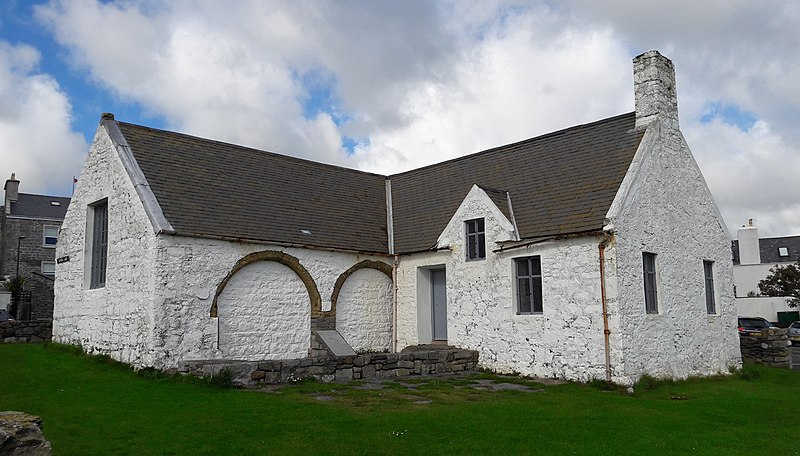
Photo: https://upload.wikimedia.org/ 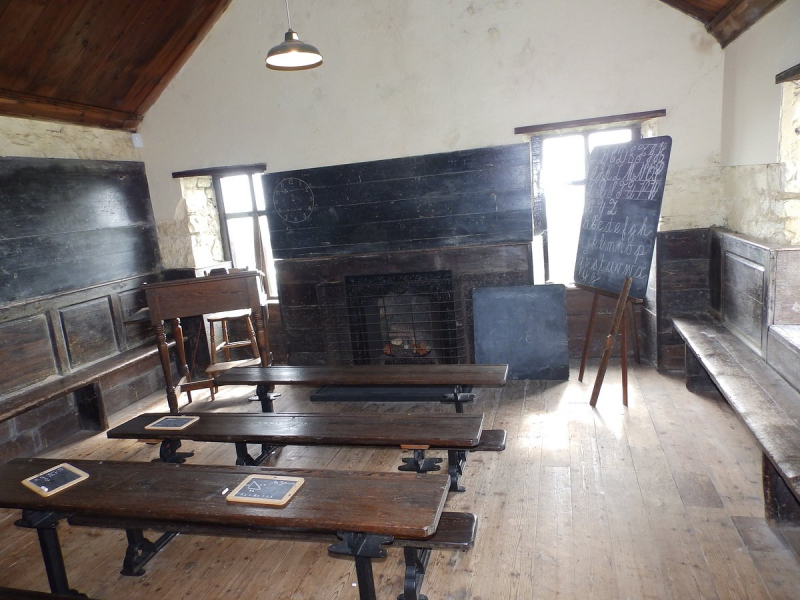
Photo: https://upload.wikimedia.org/











